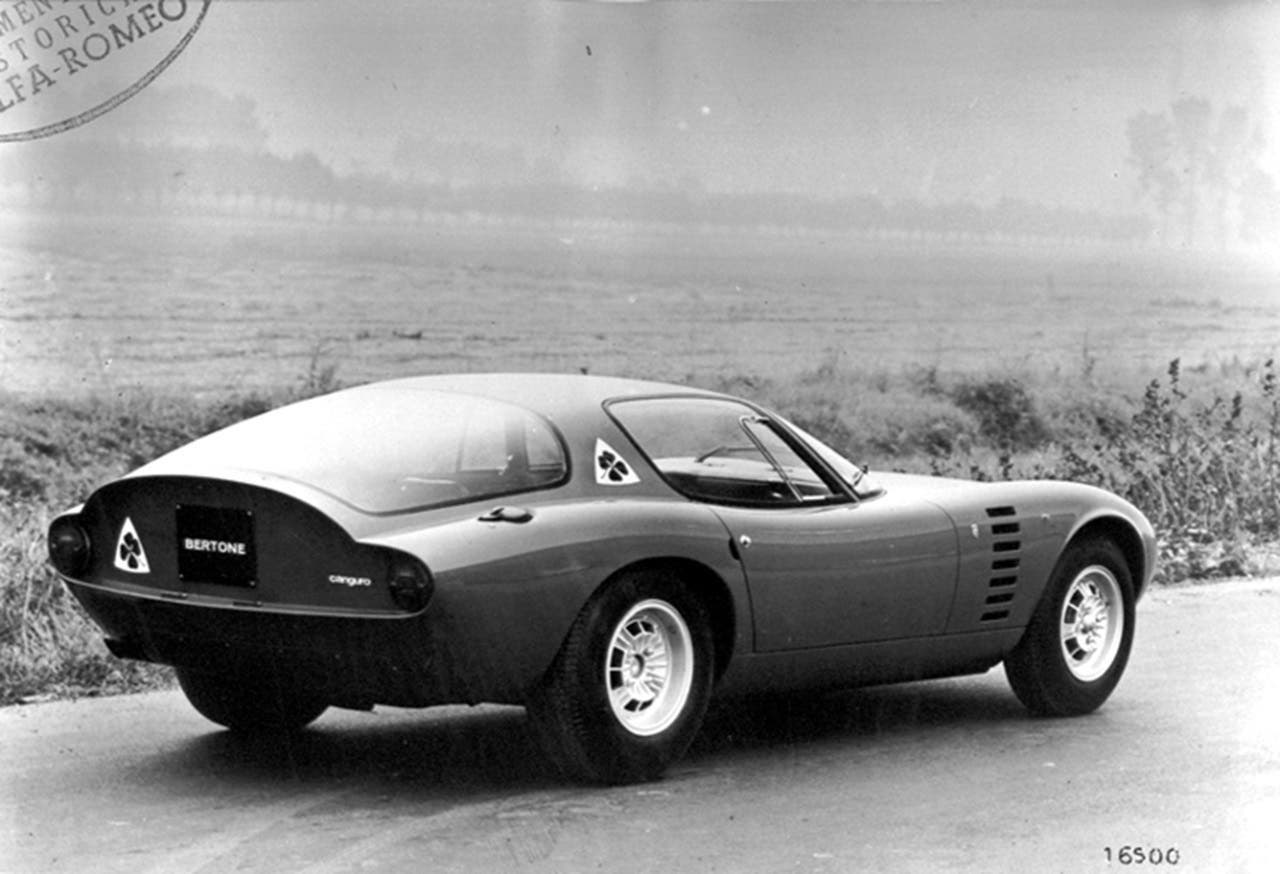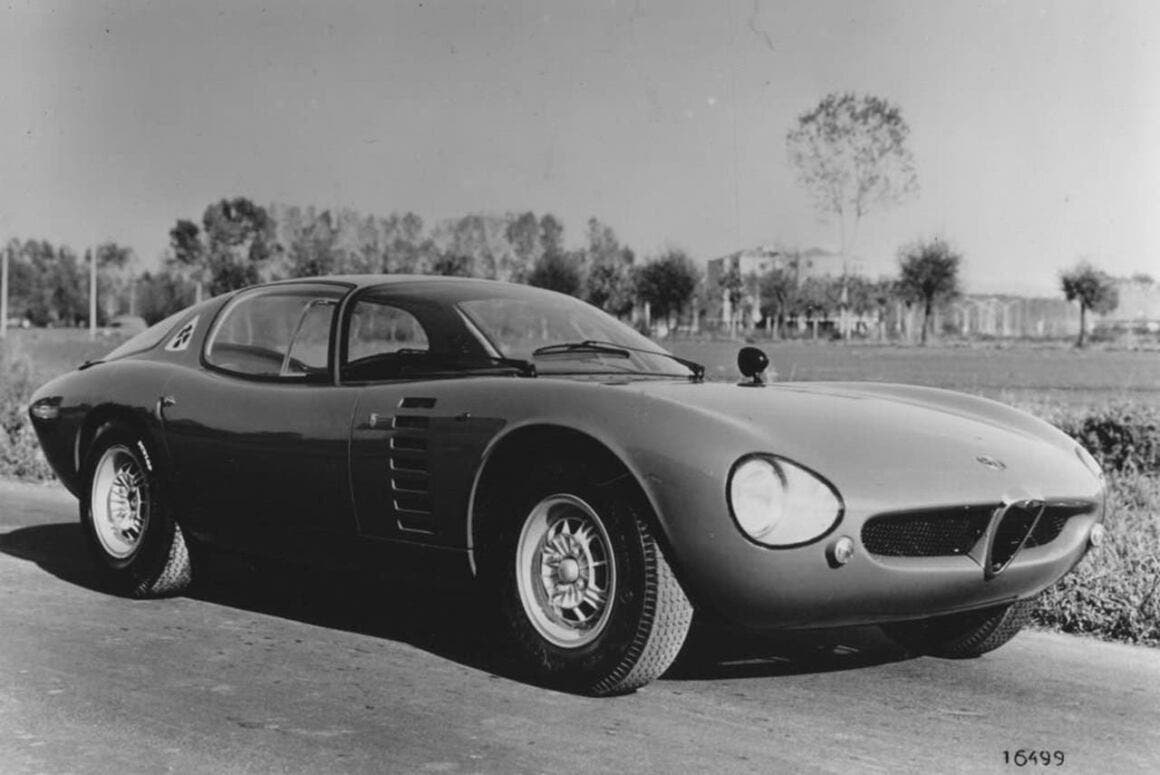With the sporting successes of the Alfa Romeo Giulia TZ, the impulse was born to create a production model to bring its dynamic virtues and performance to the roads. In the early ’60s, the brand’s managers commissioned Bertone and Pininfarina to create prototypes to develop this car. The Alfa Romeo Canguro was Bertone’s proposal.
Few concept cars have been as innovative and have had such a rich history of twists and turns as the Alfa Romeo Canguro, which turns 60 years old
It will soon be 60 years since the presentation of this prototype at the 51st edition of the Paris Motor Show, where it received practically unanimous applause from critics and the public. Its fiberglass body, with a design by Giorgetto Giugiaro, who had already demonstrated his talent in the 1963 Alfa Romeo Giulia Sprint, surprised with its soft and sinuous lines, with windshield and windows harmoniously integrated, without interruptions, in the dynamic and avant-garde environment of this car.
The glass surface itself is one of the great innovations of the Canguro: for the first time, the various windows were glued to the body, something more than usual in current vehicles. The design did not lack details, such as the aerodynamic rear “coda tronca”, now present in the new Alfa Romeo Junior, or the internal air intakes that echoed the shape of the legendary “four-leaf clover”. Under the hood, a 4-cylinder engine coupled with a 5-speed manual gearbox offered a power of 170 HP at 7500 rpm. Like the Alfa Romeos of those years, it was a rear-wheel drive car.

Based on the revolutionary tubular chassis of the Alfa Romeo Giulia TZ, Bertone and Giugiaro created an exercise in avant-garde and aesthetic style, without thinking about possible technical or industrial limits. It was precisely this innovative spirit that prevented the Alfa Romeo Canguro from taking a decisive step towards the asphalt. Shortly after ruling out the transition to series production, the Alfa Romeo Canguro suffered a spectacular accident during advertising filming at the Parabolica curve of the Monza Autodrome. With great regret, Bertone gave up on its reconstruction, given the 15,000 hours that would have been necessary to bring it back to its original state. The fate of this concept car seemed sealed.
However, the legacy of the Alfa Romeo Canguro would not fall on deaf ears. In addition to innovations in the treatment of glass surfaces, many features of this prototype, such as the horizontal air intakes at the end of the front wing, became a characteristic element of Bertone projects for many years. Many of its aesthetic and technical elements, moreover, would become the basis of the prototype of the Alfa Romeo Montreal, which would be presented at the Universal Exhibition held in the Canadian metropolis in 1967 and would end up being commercialized in the 70s.
As for the remains of the Alfa Romeo Canguro, they were purchased by a German enthusiast and changed hands until they reached a Japanese car collector. With the support of the Alfa Romeo Museum, he dedicated himself to its restoration until the complete reconstruction of this car, which experienced a second youth at the prestigious Concorso d’Eleganza Villa d’Este, where it was awarded in 2005.
